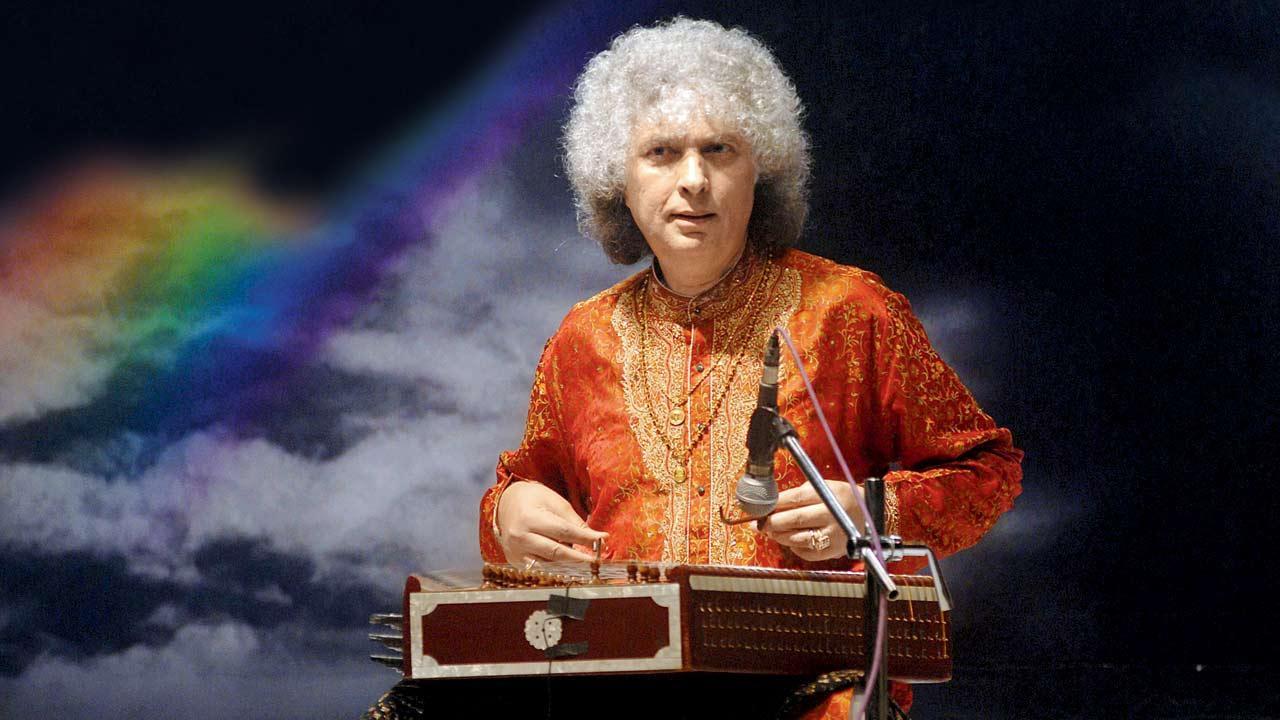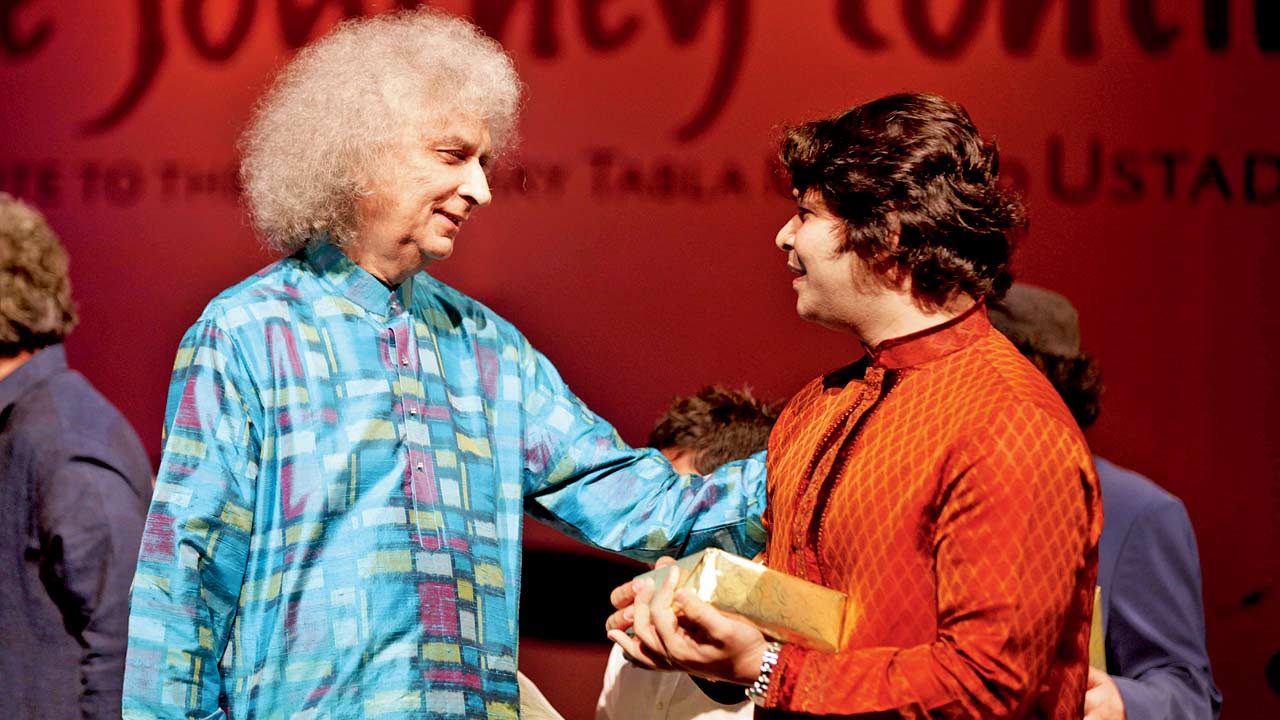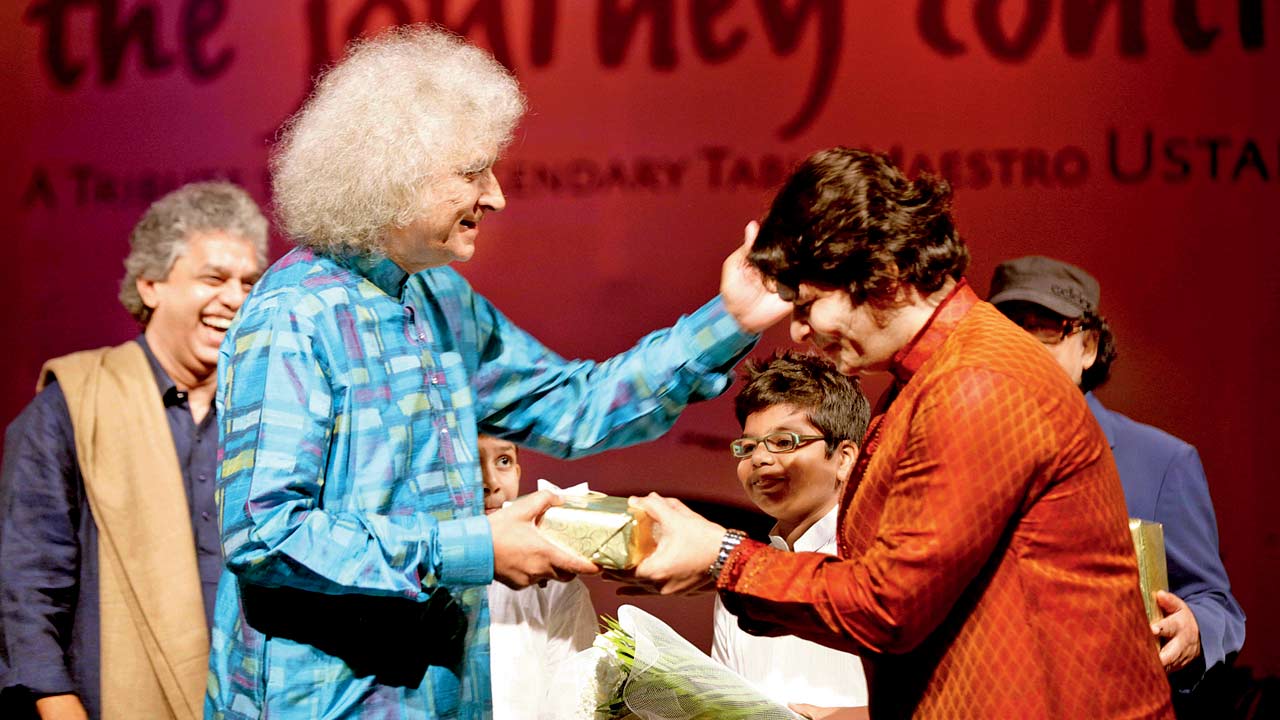Ustad Amjad Ali Khan, flautist Rakesh Chaurasia remember the maestro who gave the santoor its exalted status in Indian classical music

Ustad Amjad Ali Khan. Pic/Getty Images
The year 1967. Filmmaker K A Abbas was explaining a situation to musicians gathered for the background score of his Dharti Ki Pukaar. When his eyes fell on a young musician, he called him aside. The young man felt Abbas wanted something specific in the music, but was shocked when he was offered a role in Saat Hindustani (1969). “Dikhte-bolte bhi theek ho... kad-kaathi bhi sahi hai,” Abbas told him.
The young man folded his hands, and said he was happy to only pursue music. Had the 29-year-old agreed, he would have debuted along with Amitabh Bachchan. What that trajectory would’ve done for Pandit Shivkumar Sharma, we’ll never know, but the silver screen’s loss was music’s gain. The octogenarian legend was suffering from kidney problems for the past six months and was on dialysis. He breathed his last on Tuesday morning, following a massive cardiac arrest soon after his bath, according to his family.
Among those condoling the maestro’s demise was Prime Minister Narendra Modi, who tweeted: “Our cultural world is poorer with the demise of Pt Shivkumar Sharma ji. He popularised the santoor at a global level. His music will continue to enthral the coming generations. I fondly remember my interactions with him. Condolences to his family and admirers. Om Shanti.”

Sharma with Rakesh Chaurasia
Talking to mid-day, sarod maestro Ustad Amjad Ali Khan said his demise marked the end of “a musical era”. “We were close. Our families share a great rapport. We are all deeply saddened by this tragic news. With him, a musical era has ended. We live in a cruel time when so many legends are bowing out. Apart from a pioneering musician, he was an exceptional human being.”
The santoor, previously confined to Jammu & Kashmir, rose meteorically to ensconce itself as a classical instrument, thanks to Sharma. Though connected with the Sufi tradition of Kashmir and called shatatantri veena in ancient texts, it didn’t enjoy its current exalted status at that time. The santoor maestro’s father Pt Uma Dutt Sharma came across the santoor as a music supervisor with a local radio station and felt it could lend itself to the classical style. A young Shivkumar (initially trained in tabla and singing) was introduced to santoor at 13. Within three years, he was playing it on the radio.
Despite purists curling their lip at the santoor, filmmaking legend V Shantaram was impressed with the 18-year-old Sharma and asked him to play for his Jhanak Jhanak Payal Baaje (1955) under Vasant Desai. Back in Srinagar, following an argument when he refused a secure job in the Jammu and Srinagar Radio, Sharma left home and came to Bombay with his santoor and Rs 500. Pt Shivkumar Sharma has often told this writer of those tough times. “I’d only have an anna in my pocket and nothing to eat. I’d accompany others on tabla since the negative criticism of the santoor meant no concerts,” he’d reminisce.

Odd film assignments helped sustain both him and his fire for the santoor. While the instrument was traditionally played in Kashmir on a small stand, with the player squatting in front, he placed it on his lap to cut vibrations. He worked on the tuning, increased range and discovered how to use mallets to reproduce the Indian vocal nuances. A decade of his toil finally saw the music fraternity warm up to his instrument. With Silsila (1981), both he and flautist Pandit Hariprasad Chaurasia turned film composers, following it up with Faasle (1985), Vijay (1988), Chandni (189), Lamhe (1991), Sahibaan (1993) and Darr (1993).
“In some songs, like Tere mere hoton pe, you can clearly see how he brought in elements of classicism and folk music from the mountains,” remembers ghazal exponent Pankaj Udhas, who says he has never met a more disciplined musician. “Once at an event, he gently stopped me from drinking water immediately after my meal, saying it was bad for digestion,” said Udhas, adding, “Even in his 80s, he never slouched on stage and sat ramrod straight.” He also spoke of Sharma’s prowess over rhythm. “As someone who had played tabla and could sing, it was interesting to see how he would even fox Zakir bhai [Zakir Hussain] at times when they played together.”
Santoor exponent Satish Vyas, who trained under Sharma from 1975 to 2006, says he feels orphaned. “Both Panditji and his wife treated me like their son. Even when he corrected me, guruji did it gently, playing on each disciple’s strength.” Sharma knew flautist Rakesh Chaurasia, his colleague Pt Hariprasad Chaurasia’s nephew, from when he was little. “Extremely loving and indulgent, he’d come up after a concert and praise even the smallest improvisation I tried. Sadly, I’ll miss uncle’s loving caress now,” says the flautist.
Career milestones
- Sharma gave his first public performance in Mumbai in 1955.
- In 1960, he recorded his first solo album.
- In 1967, he teamed up with flautist Hariprasad Chaurasia and guitarist Brij Bhushan Kabra to produce the concept album, Call of the Valley.
- The santoor virtuoso was honoured with the Sangeet Natak Akademi Award in 1986, the Padma Shri in 1991, and the Padma Vibhushan in 2001.
 Subscribe today by clicking the link and stay updated with the latest news!" Click here!
Subscribe today by clicking the link and stay updated with the latest news!" Click here!










